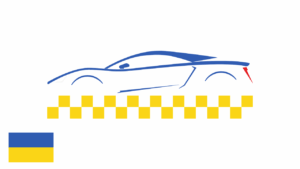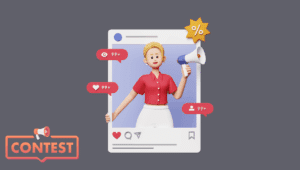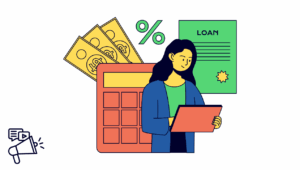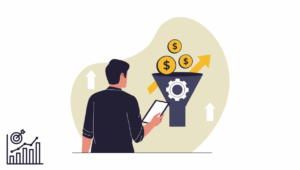If you run a SaaS, there is a good chance your customer acquisition cost feels heavier than it should. Ad platforms get more expensive every quarter, conversion rates stagnate, and leadership still wants efficient growth. In this article, you’ll learn how to stop burning your budget with the top 7 scrappy marketing strategies for SaaS to slash CAC.
You do not fix that only by spending more. You fix it by getting sharper. Scrappy marketing is not about acting small, it is about acting precise and creative so every dollar has a job and every channel earns its keep.
In this guide you will see seven practical strategies you can start this quarter to cut CAC without killing pipeline. No fancy theory, just moves that work for lean SaaS teams.
Understand CAC Like A Hawk Before You Try To Cut It
Before you touch campaigns, you need a clear picture of where your CAC is inflated.
Look at CAC broken down by:
- Channel, for example paid search, paid social, organic, outbound, partner
- Segment, for example SMB, mid market, enterprise
- Funnel stage, for example click to signup, signup to trial start, trial to paid
Often the problem is not the channel itself. The issue is a weak message, a slow website, or a messy handoff from marketing to sales.
If you do not already, track:
- Cost per lead
- Cost per sales qualified lead
- Cost per opportunity
- CAC payback time in months
With that baseline, the seven strategies below become levers, not guesses.
Strategy 1: Sharpen Your Ideal Customer Profile And Positioning
The fastest way to waste budget is to talk to everyone. The fastest way to reduce CAC is to talk only to the people who feel your product as a painful problem.
Tighten your ideal customer profile:
- Look at your best customers by retention, expansion, and support tickets.
- List common traits, for example team size, industry, tech stack, geography, job titles.
- Turn this into a one page ICP document that every marketer and seller can recite.
Then update your positioning to speak directly to that ICP.
Instead of “Modern Analytics Platform For Every Business” try something like:
“Product Analytics For B2B SaaS Teams That Want Clear Answers, Not Just Dashboards”
You will see:
- Higher click through rates because ads feel relevant
- Better lead quality because the wrong people filter themselves out
- Lower CAC because sales spends less time on poor fit deals
Scrappy move: sit with two or three top customers this month, interview them for thirty minutes each, and rewrite your headline and hero section using their phrases.
2 Marketing Strategies for SaaS to Slash CAC: Turn Your Website Into A Conversion Engine
Many SaaS teams over invest in traffic and under invest in the place that should convert that traffic into trials or demos.
You do not need a full redesign to fix this. You need focused conversion rate optimization.
Start with three high impact pages:
- Homepage
- Pricing page
- Main landing page for your primary offer
For each page:
- Define one primary call to action, not three or four competing options.
- Make that action obvious above the fold, for example “Start Free Trial” or “Book A Demo”.
- Remove anything that does not support the decision to act, like vague carousels or decorative copy.
- Add social proof near the call to action, for example logos, testimonials, review badges.
Run simple A or B tests on:
- Headlines that name the problem and promise a clear outcome
- Shorter forms that ask for only what sales actually uses
- Personalization by segment, for example different hero copy for agencies and for SaaS teams
If you lift conversion from two percent to four percent on a key page, you just cut your CAC in half for that segment without spending more.
Strategy 3: Build High Intent Content That Ranks And Converts
Not all content is equal. Some pieces are nice for awareness. Others are magnets for buyers who are almost ready to choose a tool.
Scrappy teams prioritize high intent content, topics that signal someone is close to purchase, for example:
- “Best [Category] Tools For [Niche]”
- “[Category] Pricing Comparison”
- “[Competitor] Alternatives”
- “[Category] For [Job Title]”
Turn those into:
- Deep comparison guides with real screenshots and honest trade offs.
- Step by step playbooks that show how to solve a problem using your product along the way.
- Landing pages optimized for search and conversions, not generic blog posts.
Every piece should include:
- A clear call to action to start a free trial or book a strategy call
- Inline prompts, for example “Want this template ready inside your workspace, start a free trial”
- Lead magnets that align with the topic, for example checklists, calculators, swipe files
Organic traffic takes time, but high intent content can bring in qualified leads for months or years with no extra ad spend. Over time, this channel becomes your quiet CAC hero.
4 Marketing Strategies for SaaS to Slash CAC: Use Founder Led And Expert Led Social Selling
In early and mid stage SaaS, your founders and senior experts are often your strongest marketing assets. People trust people more than logos.
You do not need a complex posting calendar. You need consistent, useful content where your buyers already hang out, for example LinkedIn, niche communities, or select Slack groups.
Here is a simple weekly flow for a founder or subject expert:
- One short story per week about a customer problem and how they solved it.
- One practical thread or post with a checklist, template, or numbers.
- One behind the scenes update about experiments you are running or lessons from a failed test.
- Daily comments on posts from ideal customers and partners.
This builds:
- Brand visibility in front of decision makers
- Trust that your team understands the real problems
- Inbound leads that start with “I keep seeing your posts, we should talk”
The cost is time, not budget, and it often lowers CAC versus cold outbound alone.
Strategy 5: Activate Customers With Referrals And Partner Loops
If your happiest customers are not helping you acquire more customers, you are leaving a low CAC channel untouched.
A scrappy referral loop does not have to be fancy.
You can:
- Identify power users and top accounts based on usage and NPS.
- Invite them to a simple referral program, for example “Refer a friend and get one free month per qualified signup.”
- Give them an easy to share landing page and a short email or message template.
For partners, look at tools your customers already use alongside yours.
You can:
- Co host webinars with a complementary SaaS
- Swap guest posts and playbooks
- Build a small integration and co market it
Referral and partner driven deals often close faster and churn less. That improves CAC efficiency in real terms because you get more lifetime value per dollar spent.
Strategy 6: Squeeze More Value From Existing Traffic With Lifecycle Email And In App Messages
Many SaaS companies over focus on acquisition channels and under use owned channels like email and in app messaging.
If you already have signups and product users, you can improve CAC payback by moving more of them to paid plans, without buying new clicks.
Create a simple lifecycle system that covers:
- New signups who have not activated key features
- Active trial users who have hit value but not yet upgraded
- Customers who are at risk because usage is dropping
Examples of useful flows: Marketing Strategies for SaaS to Slash CAC
- Onboarding sequence that shows one clear next step per email and per in app message, with short videos or GIFs.
- Triggered messages when someone uses a sticky feature for the first time, inviting them to invite a teammate or connect a data source.
- Upgrade prompts when a user hits a soft limit, for example number of seats, projects, or reports.
Because these campaigns target existing interest, the “cost” per additional upgrade is tiny compared with cold acquisition. That improves blended CAC and revenue per lead.
Strategy 7: Run Small, Fast Experiments Instead Of Big Campaign Bets
Scrappy marketing teams treat channels as experiments, not identity. You are not a “paid” company or a “content” company. You are a team that runs tests and keeps only what works.
Adopt a simple experiment cadence:
- Set a monthly experimentation budget that you are comfortable losing.
- Choose one hypothesis at a time, for example “Cold email focused on a specific trigger event will produce meetings below X dollars per meeting.”
- Define a tight test period, for example two to four weeks, and a clear kill or scale rule.
- Review results and put winners into a standard playbook.
Good experiment areas for lowering CAC:
- New angle or offer on an existing channel, for example “migration in one week” instead of “feature list”
- New narrow audience inside a platform, for example specific job titles plus specific tech stack
- New creative type, for example short founder videos instead of static images
This approach keeps you from locking half your budget into campaigns that never had a chance while surfacing low cost acquisition pockets that compound over time.
How These Strategies Actually Help You Slash CAC: Marketing for SaaS
Here is a simple view of how each strategy affects CAC and what you should pay attention to.
| Strategy | Primary CAC Lever | Cost Level | Time To See Results | Key Metrics To Track |
|---|---|---|---|---|
| Sharpen ICP And Positioning | Improves lead quality and conversion throughout funnel | Low, mainly time | Weeks | Lead to opportunity rate, win rate, average deal size |
| Website Conversion Optimization | Increases signups and demo requests from same traffic | Low to medium | Weeks | Visitor to signup rate, signup to opportunity rate |
| High Intent Content | Drives organic, high intent traffic with no ongoing ad spend | Medium, content production | Months | Organic sessions, assisted conversions, content influenced revenue |
| Social Selling | Generates warm inbound leads and partner opportunities | Low, founder or expert time | Weeks to months | Inbound demo requests, social engagement from ICP accounts |
| Referrals And Partnerships | Adds a low CAC channel with high trust leads | Low to medium | Weeks to months | Referrals per account, partner sourced pipeline, close rate |
| Lifecycle Email And In App | Improves activation and upgrades from existing leads | Low, messaging and setup | Weeks | Activation rate, trial to paid conversion, expansion revenue |
| Small, Fast Experiments | Finds new low cost channels and offers while capping downside | Flexible, controlled test budget | Weeks | CAC by experiment, cost per opportunity, payback period |
You do not need all seven running at full speed on day one. The scrappy way is to pick one or two that match your current bottleneck and stack from there.
Putting It All Together In The Next Ninety Days
Here is a realistic ninety day plan for a lean SaaS marketing team that wants to lower CAC without asking for more budget.
Month one:
- Audit CAC by channel and segment.
- Build or refine your ICP and positioning.
- Clean up your main website pages for one clear action and visible social proof.
Second Month:
- Publish two or three high intent content pieces with strong calls to action.
- Start a simple founder social routine three times per week.
- Turn on a basic onboarding email and in app flow.
Month three:
- Launch a lightweight referral offer for top customers.
- Run one focused acquisition experiment with a fixed test budget.
- Review what lowered effective CAC and plan which levers to scale next quarter.
Scrappy does not mean chaotic. It means intentional, curious, and honest about what actually brings in good customers at a cost you can live with.
When you work this way, CAC stops feeling like a black box and starts looking like a set of dials you can adjust, one experiment at a time.







